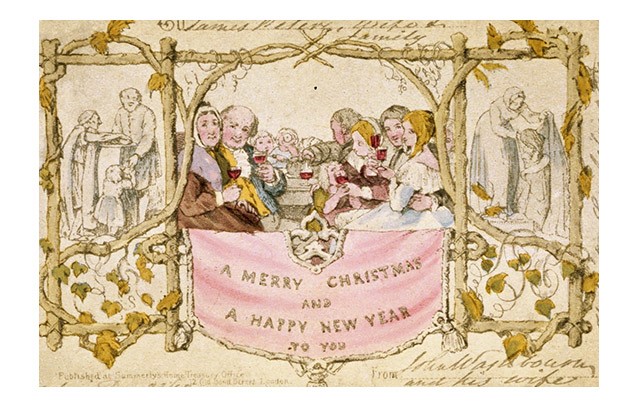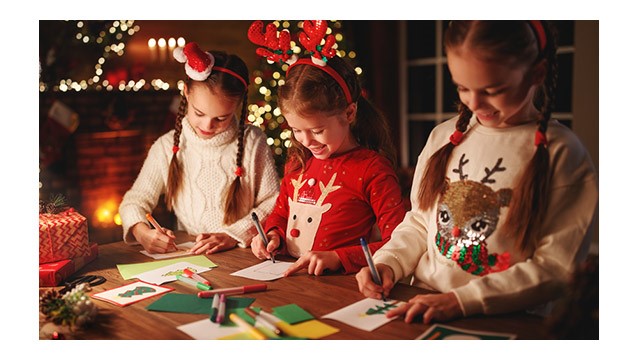The Importance of Connecting Through Holiday Cards
Holiday cards may feel like an anachronism in an era of texts, emails, and social feeds, but they’re growing in popularity as people look for fresh ways to connect.
Nov 28, 2022
Written by our Founder and CEO, our Celebrations Pulse Sunday Letters aim to engage with our community. From sharing stories to welcoming your ideas, we want to help you to express, connect, and celebrate the important people in your life.
Thanksgiving weekend kicks off many community and family traditions: celebratory feasts, office parties, nonstop shopping, and gift exchanges. These are the reasons people love the season despite the shorter days and colder weather.
There’s another tradition that many of us see as a chore – and, in fact, we often wonder why we do it year after year. It’s the annual exchange of season’s greetings and family updates through paper cards sent through the mail.
You might buy a box of cards and just sign your name. Or you might type up a lengthy letter summarizing your family’s activities throughout the year and send it to your full list. Some people create photo postcards while others craft handmade cards. In fact, Jim spends the most time on holiday cards with photos. He compares them with the previous year’s to admire new family members, growing children, and new pets.
In the age of social media where it seems everyone is aware of what everyone else is doing, it seems like an antiquated tradition that’s ready to take the path of rotary phones and horse-drawn buggies. Yet millions of cards are bought and sent each year. And we couldn’t be more excited to send (and receive) them.
After all, this tradition is all about connecting.
Maintaining relationships since 1843
This annual ritual traces its history to a time that’s quite different from today. The tradition of sending cards got its start in 1843, when Sir Henry Cole was tasked with setting up what would become the UK Post Office.
Cole wanted something that would be used by ordinary people. He and his friend, the artist John Horsely, designed the first card and sold them for a shilling each. It had three panels, with the first and third showing people caring for the poor and the middle showing a family enjoying Christmas dinner.

By the late 1840s, holiday cards appeared in the U.S., but they were expensive. It wasn’t until 1875 that printer Louis Prang figured out a way to mass-produce the cards and bring down their cost. (The first cards featured children, plants, and flowers!) The practice took off. In 1915, John C. Hall and his brothers created Hallmark Cards.
Holiday cards today
You’d think that the number of holiday cards sent and received would be on the decline as people can see photos and updates in their social feeds. But that hasn’t occurred largely because digital-native generations have embraced paper over digital updates. Today, Americans buy about 1.3 billion cards during the holiday season.
In a recent survey, 20% of people said they planned to send holiday cards for the first time this year. The percentage jumped to 40% for millennials as they see physical cards as a way to strengthen relationships beyond social feeds and emails. (The same poll found that 80% of Gen Zers planned to keep the cards they received as a token of their relationships.)
The power of personal messages
These days, it’s easy to upload a family photo, add your name, and be done with your Christmas cards. But taking that extra step to write personalized holiday wishes for friends and loved ones makes all the difference.
What you write in your holiday cards will depend on the recipient. If you’re sending Christmas card wishes to close friends and family, you can be informal and casual with your greetings. You can choose a greeting inspired by your favorite Christmas song or quote or write a funny holiday greeting that’s full of personality and festive cheer.
You can relate a religious message in your card if you know the person receiving it observes Christmas. Alternatively, your message can be more secular with wishes for a happy holiday season or new year.
You can go with a short and simple greeting or combine several of your favorite lines to create a truly special and personal message. You can even incorporate a heartfelt “thank you” in your holiday cards to show your gratitude during this special time of the year.
Don’t forget to personalize your message even if it’s a few words or a single sentence. Holiday cards are a traditional way to use your power to connect and strengthen your relationships. And they’re a great way to stay connected for the rest of the year.

Start connectivity calendar with holiday cards
During the pandemic, we wrote about the value of keeping a connectivity calendar. Jim, for example, writes out a schedule of people to reach out to, even if it’s just by a quick chat, text message, or email. The calendar reminds him to stay connected just like his business calendar reminds him of meetings and other business engagements.
The holiday card ritual is a great way to start your own calendar. The people on your recipient list are there because you had a relationship at least when they were added. If you only connect through holiday cards, use your power this year to say you’re thinking of them and would like to chat by phone or email to catch up in January. Then add it to your connectivity calendar.
Likewise, if someone mailed you a holiday card and that person isn’t on your list, return the favor with your card and a personalized message. Make a plan to reach out once the holidays are over. We promise it’ll brighten the new year for everyone!
All the best,
Chris & Jim







